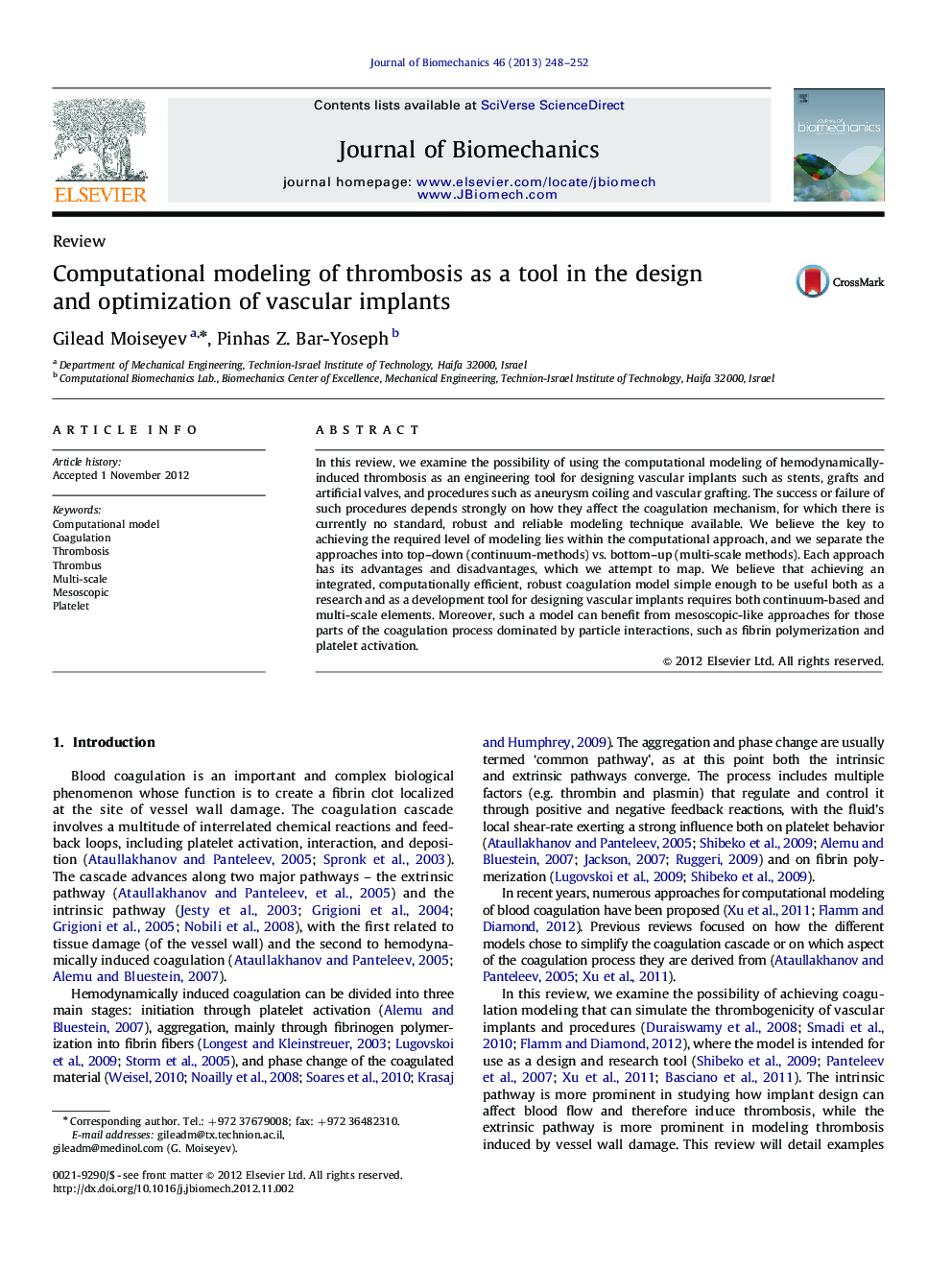| Article ID | Journal | Published Year | Pages | File Type |
|---|---|---|---|---|
| 872126 | Journal of Biomechanics | 2013 | 5 Pages |
In this review, we examine the possibility of using the computational modeling of hemodynamically-induced thrombosis as an engineering tool for designing vascular implants such as stents, grafts and artificial valves, and procedures such as aneurysm coiling and vascular grafting. The success or failure of such procedures depends strongly on how they affect the coagulation mechanism, for which there is currently no standard, robust and reliable modeling technique available. We believe the key to achieving the required level of modeling lies within the computational approach, and we separate the approaches into top–down (continuum-methods) vs. bottom–up (multi-scale methods). Each approach has its advantages and disadvantages, which we attempt to map. We believe that achieving an integrated, computationally efficient, robust coagulation model simple enough to be useful both as a research and as a development tool for designing vascular implants requires both continuum-based and multi-scale elements. Moreover, such a model can benefit from mesoscopic-like approaches for those parts of the coagulation process dominated by particle interactions, such as fibrin polymerization and platelet activation.
